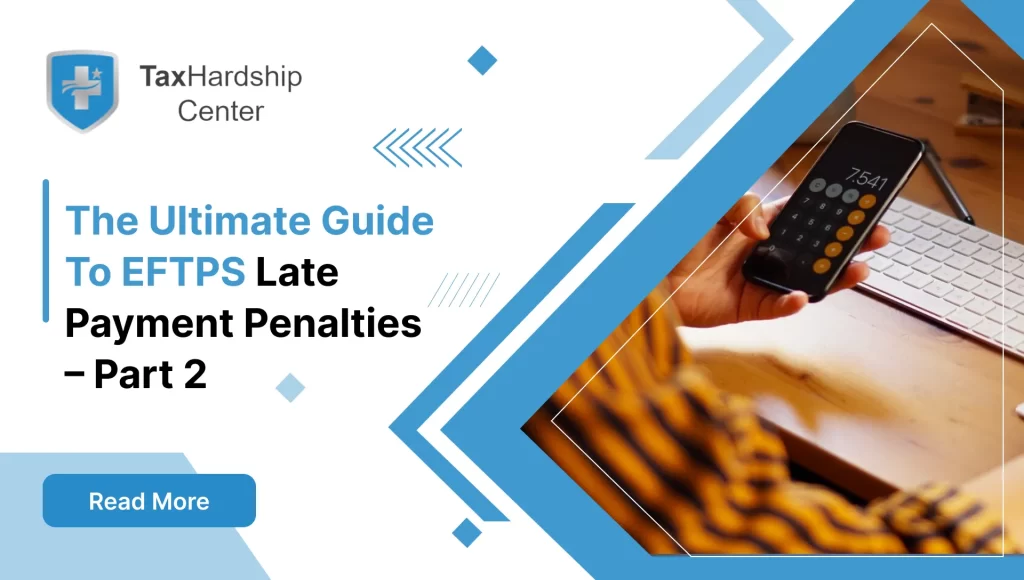Individuals and businesses may find themselves in the bind of tax liability in pursuing financial stability and optimization. The IRS Tax Reduction Program presents an avenue for taxpayers seeking financial relief. This article comprehensively analyzes this program, weighing the benefits and tradeoffs and exploring the challenges taxpayers may encounter while navigating it.
Understanding the IRS Tax Reduction Program:
The IRS Tax Reduction Program, often called an Offer in Compromise (OIC), is a settlement option for taxpayers who cannot pay their total tax liability. It allows for negotiating a reduced tax bill, assuming that the offered amount represents the most the IRS can expect to collect within a reasonable period. Income, expenses, asset equity, and future earning potential determine an individual’s or entity’s ability to pay.
Key Factors Impacting Tax Reduction Decisions:
1. Financial Disclosure:
Engaging with the IRS Tax Reduction Program, specifically the Offer in Compromise (OIC), requires taxpayers to provide exhaustive financial information. Disclosure encompasses all income sources, assets, expenses, and liabilities. This profound level of transparency is a double-edged sword; on the one side, it is necessary to justify the inability to pay the entire tax liability, while on the other, it can lead to concerns about personal financial privacy and may set a precedent for future interactions with the IRS. Applicants should consider the potential implications of such disclosure, which may include a more thorough examination of their financial activities by the IRS even after the OIC process is concluded.
2. Complex Application Process:
The OIC is a complex form that can be hastily filled out and submitted. It demands meticulous attention to detail and a comprehensive understanding of applicable tax laws—knowledge typically possessed by tax professionals. The IRS requires Form 656, the Offer in Compromise, and Form 433-A (OIC), Collection Information Statement for Wage Earners and Self-Employed Individuals, or Form 433-B (OIC), Collection Information Statement for Businesses, to be completed with precision. Any errors, inaccuracies, or omissions can result in the denial of the offer. The overall success rate for OIC acceptance in recent years has hovered around 40%, reflecting the selectiveness of the process.
3. Eligibility Requirements:
To even be considered for an OIC, taxpayers must meet stringent eligibility criteria set forth by the IRS. This includes being current with all filing and payment requirements and not being in an open bankruptcy proceeding. The taxpayer’s ability to pay, income, expenses, and asset equity are closely scrutinized. Given these strict requirements, many applicants may be deemed ineligible before the merits of their offer are even assessed.
4. Trade-offs and Compromises:
The immediate benefit of reduced tax debt might seem enticing, but it’s essential to consider the long-term repercussions. One such implication is the potential impact on credit scores; an OIC is a public record and can be viewed as a negative mark on credit reports. This can affect future borrowing costs, insurance rates, and employment opportunities, as some employers review credit history when hiring.
5. Cost-Benefit Analysis:
The decision to pursue an OIC should involve carefully evaluating the costs versus the benefits. While an OIC can significantly reduce a taxpayer’s liability, there are associated costs, including a $205 application fee and initial payment (which varies based on the type of offer submitted), as well as potential fees for enlisting the help of a tax advisor or attorney, which can run into thousands of dollars. The taxpayer must determine whether the potential tax savings outweigh these costs. Additionally, disclosing financial details might require concessions that some taxpayers may find too invasive.
Taxpayers considering the IRS Tax Reduction Program must weigh these factors carefully. The key is to ensure that the potential financial relief aligns with one’s broader financial strategy and personal privacy comfort levels. It is often beneficial for taxpayers to consult with a qualified tax professional who can provide a thorough analysis tailored to their financial situation and assist in navigating the complexities of the OIC application process.
Popular Tax Relief Options
When dealing with unpaid taxes, the IRS provides several options to help individuals and businesses manage and resolve their tax debts. Here are detailed explanations of five standard tax relief options:
1. Installment Agreement:
An installment agreement is a payment plan that allows taxpayers to pay their tax debt over time. If you owe more than $25,000 or a business with a balance exceeding $10,000, the IRS generally mandates that payments be made through direct debit or automatic withdrawals from a bank account. This ensures regular payments and reduces the risk of default. Individuals can still opt for an installment agreement for balances under these thresholds but may have more flexible payment options.
2. Offer in Compromise (OIC):
An Offer in Compromise allows qualified taxpayers to settle their tax debts for less than the total amount owed. This option is considered when paying the whole debt would cause financial hardship or doubts about the taxpayer’s liability or collectibility. The IRS evaluates the taxpayer’s ability to pay income, expenses, and asset equity to qualify for an OIC. Completing an OIC requires detailed documentation and often a thorough review by the IRS. Acceptance is based on ensuring that the offered amount is the most the IRS can reasonably expect to collect within a reasonable time frame.
3. Currently Not Collectible (CNC) Status:
Taxpayers who cannot pay their tax debts and meet the IRS criteria for financial hardship may be placed in Currently Not Collectible status. This means the IRS temporarily halts all collection activities, such as levies and garnishments. Meanwhile, in CNC status, penalties and interest will still accrue. The IRS may resume collection efforts if the taxpayer’s financial situation improves. If the taxpayer remains in CNC status until the ten-year statute of limitations on tax debt expires, the debt becomes permanently uncollectible, and no further payment will be required.
4. Penalty Abatement:
Penalty abatement is a relief option for taxpayers facing penalties due to failure to file or pay taxes on time. If eligible, the IRS may waive or reduce the penalties. Qualifying for penalty abatement often requires showing reasonable cause, such as natural disasters, serious illness, or other extenuating circumstances that prevented timely payment or filing. Sometimes, first-time penalty abatement is available for taxpayers with a good compliance history.
5. Request for an Extension to Pay:
If taxpayers need additional time to pay their tax balance in full, they may request a short-term extension of up to 120 days. A 0.5% failure-to-pay penalty accrues monthly on the unpaid balance during this period. If the taxpayer meets the terms of the extension, it can provide valuable time to secure funds to clear the debt. However, failing to pay by the extended due date will result in the IRS resuming its collection efforts.
It’s essential for taxpayers seeking relief options to understand that each program has specific eligibility requirements and to carefully consider which option best fits their financial situation. Consulting with a tax professional or an IRS representative can help taxpayers navigate these options and take informed steps toward resolving their tax liabilities.
Challenges in the OIC Process:
1. Navigational Difficulties:
The path to securing an approved Offer in Compromise (OIC) with the IRS is strewn with procedural and bureaucratic hurdles that can perplex even the most diligent taxpayers. An array of detailed guidelines and rules—each a potential pitfall—makes the tax reduction journey complex. Indeed, statistical data from the IRS reveals that out of the 54,225 OIC applications received in 2019, only 17,890 were accepted—a stark indicator of the program’s selectivity. Furthermore, the nuanced nature of the process often necessitates the assistance of seasoned tax professionals who specialize in IRS negotiations and can adeptly manage intricate requirements.
2. Lengthy Deliberations:
The timeframe for the IRS to review an OIC application can extend well beyond the initial submission, often taking several months. During this period, interest and penalties on the outstanding tax debt continue accumulating, potentially eroding some of the financial relief that an OIC might provide. According to IRS data, the average time to complete the consideration of an OIC is about 6-9 months, although complex cases may take longer. Thus, even if an OIC is eventually accepted, the added interest and penalties can be substantial, and taxpayers need to account for this when assessing the program’s benefits.
3. Uncertainty and Psychological Stress:
The emotional weight of the OIC process should be considered. Taxpayers need more certainty, wondering if or when their offer will be approved. This psychological burden can disrupt personal well-being and complicate business decision-making and financial planning. Moreover, this stress is exacerbated by the realization that a rejected OIC can lead to further financial strain and limited options for recourse.
4. Potential for Greater Scrutiny:
The extensive financial disclosure that comes with an OIC opens a window into the taxpayer’s whole financial panorama, inviting closer inspection by the IRS. This could unveil discrepancies or trigger additional inquiries into areas of the taxpayer’s financial life that were not initially under examination. Such scrutiny may lead to further assessments or broaden the scope of an audit, resulting in additional stress and more financial obligations.
Balancing Different Factors:
Taxpayers considering an OIC face a balancing act between the lure of immediate tax relief and the potential for long-term financial repercussions. Factors such as the potential impact on credit scores, the health of ongoing business operations, and the taxpayer’s overall financial planning goals must be considered. For example, while the immediate tax relief offered through an OIC can average around 40% of the original debt, based on IRS 2019 numbers, the long-term implications could extend much further, affecting the ability to obtain financing or even impacting future tax situations.
The Importance of a Considered Approach:
Given the complexities and potential trade-offs involved in the OIC process, a thoughtful and measured approach is essential. The decision to pursue an OIC should be part of a broader financial strategy, carefully considering every aspect of the taxpayer’s financial health. Consulting with a tax professional is advisable and likely necessary for navigating the OIC’s procedural labyrinth. A tax advisor or attorney can evaluate the merits of an OIC in the taxpayer’s unique situation and guide the process to maximize the likelihood of a favorable outcome.
Conclusion
In financial optimization and stability, the IRS Tax Reduction Program, specifically the Offer in Compromise (OIC), emerges as a potential lifeline for taxpayers burdened by substantial tax liabilities. However, the path to tax reduction has challenges and considerations. The program demands meticulous financial disclosure, navigating a complex application process, meeting stringent eligibility requirements, and weighing trade-offs that may have lasting financial implications. While the promise of reduced tax debt is alluring, applicants must conduct a thorough cost-benefit analysis, considering potential impacts on credit scores and long-term financial well-being.
Unlock Financial Freedom with Tax Hardship Center – Your Trusted Tax Advisory Partner
Are you facing the burden of tax hardship, caught in the complexities of IRS programs like the Offer in Compromise (OIC)? Look no further than Tax Hardship Center – your beacon of financial relief and trusted tax advisory. We understand the challenges of substantial tax liabilities and are committed to guiding you toward a brighter, stress-free financial future.
Why Choose Tax Hardship Center?
1. Comprehensive Nationwide Coverage:
Tax Hardship Center proudly serves all 50 states in the USA. No matter where you are, our dedicated team is ready to provide expert guidance tailored to your state’s tax regulations.
2. Experienced Team of Tax Advisors:
Our seasoned team of tax advisors is at the heart of the Tax Hardship Center. Backed by years of expertise, our advisors are well-versed in IRS programs, especially the intricate Offer in Compromise process. We navigate the complexities for you, ensuring a smooth and effective resolution to your tax hardship.
3. 14-Day Money Back Guarantee:
We are confident in our ability to impact your financial situation positively. That’s why Tax Hardship Center proudly offers a 14-day money-back guarantee. If you are unsatisfied with our services within the first two weeks, we will refund your fees – no questions asked.
How Tax Hardship Center Works:
Consultation:
Begin your journey to financial freedom with a personalized consultation. Our tax advisors will assess your situation, guide you through the available options, and recommend the best course of action.
Tailored Solutions:
Tax Hardship Center doesn’t believe in one-size-fits-all solutions. Our team crafts personalized strategies, leveraging the nuances of IRS programs to create a path that aligns with your financial goals.
Expert Negotiation:
Let our experienced tax advisors handle the intricate negotiations with the IRS on your behalf. We ensure that your financial interests are represented, striving for the best possible outcome in tax reduction.
Transparent Process:
Transparency is at the core of our service. Tax Hardship Center keeps you informed at every step, clarifying the process, progress, and potential outcomes.
Take Control of Your Financial Future – Choose Tax Hardship Center!
Don’t let tax hardship hinder your financial well-being. Trust Tax Hardship Center to be your reliable partner, offering nationwide coverage, experienced tax advisors, and a risk-free 14-day money-back guarantee. Contact us today to schedule your consultation and embark on the path to financial freedom. Your peace of mind is our priority!
FAQs:
Q1: What is the IRS Tax Reduction Program, and how does it work?
A: The IRS Tax Reduction Program, known as an Offer in Compromise (OIC), is a settlement option for taxpayers unable to pay their total tax liability. It involves negotiating a reduced tax bill based on income, expenses, assets, and future earning potential.
Q2: What key factors impact tax reduction decisions in the OIC process?
A: Financial disclosure, a complex application process, stringent eligibility requirements, trade-offs, and compromises are vital factors. Applicants must carefully consider potential impacts on credit scores and conduct a cost-benefit analysis.
Q3: What are the alternatives to the IRS Tax Reduction Program for resolving tax debts?
A: Common alternatives include Installment Agreements, Currently Not Collectible (CNC) Status, Penalty Abatement, and Request for an Extension to Pay. Each option has specific eligibility requirements and considerations.
Q4: What challenges can taxpayers face in the OIC process?
A: Challenges include navigational difficulties due to procedural complexities, lengthy deliberations leading to continued interest accrual, uncertainty causing psychological stress, and the potential for greater scrutiny due to extensive financial disclosure.
Q5: How important is professional assistance in navigating the IRS Tax Reduction Program?
A: Professional assistance, such as a tax advisor or attorney specializing in IRS negotiations, is crucial. The complexities of the OIC process require expertise for a thorough evaluation and effective navigation, increasing the likelihood of a favorable outcome.








